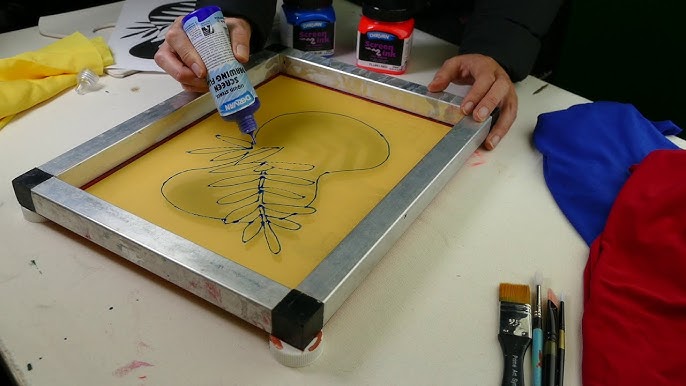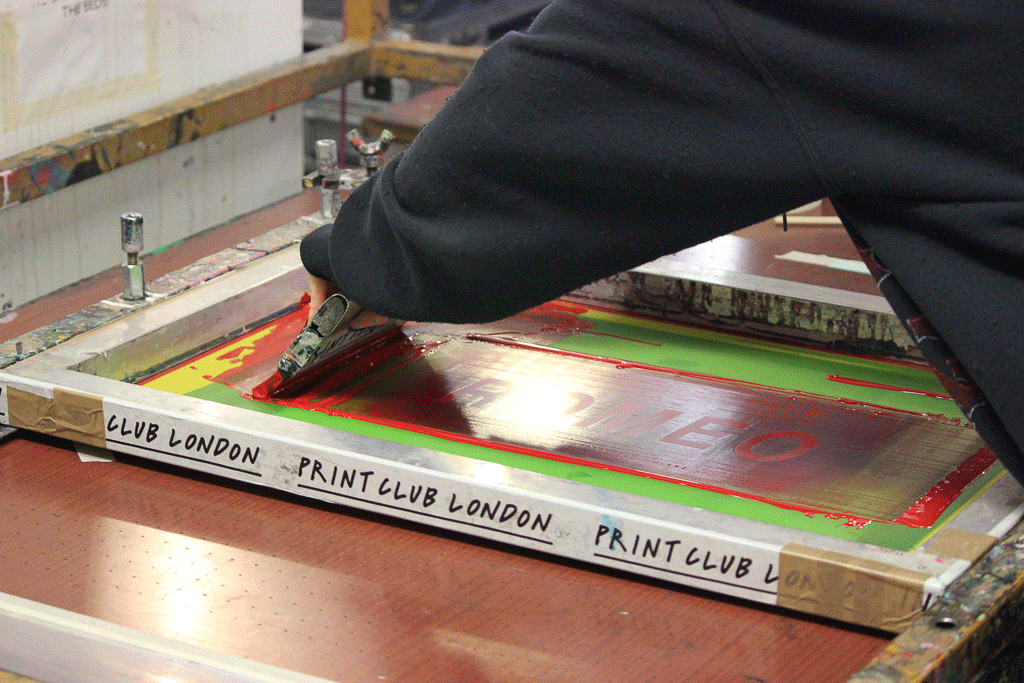The Important Guide to Recognizing Screen Printing and Its Versatile Utilizes
Screen printing has an abundant history that goes back to old times, developing right into an innovative method made use of across different sectors today. This guide checks out the details of the screen printing process, outlining its applications in home, style, and advertising and marketing decoration - 10:9 Design LLC Company. Comprehending these basics can open up imaginative possibility for both business and imaginative projects. The complying with areas will expose crucial tips and techniques to enhance one's screen printing endeavors
The Background of Screen Printing
Although screen printing has origins that map back centuries, its development shows the artistic and technological developments of numerous cultures. Coming from old China, the method was at first used for enhancing textiles and later spread to Japan, where it came to be important to Ukiyo-e woodblock printing. The technique shifted to Europe in the 18th century, where it obtained popularity among craftsmens and commercial printers. The development of image emulsion in the 20th century revolutionized screen printing, enabling more intricate layouts and greater performance. Artists like Andy Warhol further pushed its appeal, making use of the tool to develop famous works that blended commercialism and great art. By the late 20th century, screen printing had developed itself as a versatile method, utilized in style, advertising, and art. Today, it proceeds to develop, incorporating digital innovation and increasing its applications across numerous industries.
The Screen Printing Refine Explained
Screen printing transforms artistic visions right into concrete layouts through a collection of precise steps. A picture is developed and then transferred onto a screen, commonly made of fine mesh fabric stretched over a structure. A light-sensitive solution is applied to the screen, which is exposed to light, solidifying in locations not covered by the photo. After cleaning out the unhardened solution, a pattern is formed.
Next, the screen is put over the substrate, whether it be textile, paper, or one more material. Ink is then pressed through the open areas of the stencil utilizing a squeegee, depositing the layout onto the substratum listed below. This procedure can be duplicated for numerous shades, calling for different displays for each and every tone. The printed item is cured using warm to ensure the ink adheres properly, resulting in a resilient, vibrant style ready for use.
Kinds Of Screen Printing Techniques

In addition, specialized strategies, such as discharge screen printing, get rid of color from the material to create softer prints, while aluminum foil screen printing uses metallic aluminum foil to attain a shiny finish (10:9 Design Screen Printing Texas). Each technique offers distinctive qualities, dealing with numerous innovative needs and manufacturing scales, inevitably broadening the possibilities within the screen printing domain name
Applications of Screen Printing in Various Industries

Additionally, the signage and advertising and marketing sectors use screen printing for producing attractive screens and banners. This approach permits strong shades and intricate styles that catch interest. In electronic devices, screen printing is used for using conductive inks to circuit boards, vital for part links. Moreover, the home design market accepts screen printing to create unique styles on fabrics and wall surface art. In general, screen printing functions as a vital tool across diverse areas, boosting items with individualized and aesthetically attractive graphics.
Tips for Successful Screen Printing Projects
While carrying out a screen printing project, careful focus to information can significantly improve the final outcome. Picking top notch materials is vital; this includes the screen, inks, and substratums. Utilizing suitable mesh counts can influence ink deposition and information resolution. Preparation is just as crucial; extensive cleaning of displays and appropriate exposure times assure crisp prints.
Next, exact enrollment is important for multi-color prints. Utilizing placement tools can help attain accurate layering. In addition, testing prints on scrap materials before production aids recognize prospective concerns without squandering sources.

Regularly Asked Concerns
What Products Are Finest for Screen Printing on Fabric?
Cotton and polyester blends are optimal for screen printing on fabric because of their toughness and ink absorption. Additionally, specialized fabrics like silk or canvas can create unique structures and coatings, improving the total design high quality.
Just how Do I Clean and Maintain Screen Printing Devices?
To clean and preserve screen printing devices, one need to frequently clean displays with suitable solvents, evaluate squeegees for wear, lube relocating components, and shop all products in a completely dry, dust-free setting to prolong their life expectancy.
What Are the Ecological Impacts of Screen Printing?
Screen printing can have considerable ecological influences, consisting of chemical waste from inks and solvents, water use throughout cleaning processes, and energy usage. Lasting techniques and environmentally friendly materials are vital for decreasing these adverse results.
Can Screen Printing Be Done at Home Effectively?
Screen printing can be efficiently done at home with the ideal products and methods. Hobbyists can produce quality prints, though success depends on their skill level, tools, and understanding of the procedure entailed.
What Are the Expenses Connected With Starting a Screen Printing Business?

Beginning a screen printing service includes costs for devices, materials, and work space. Preliminary expenses commonly vary from a few hundred to numerous thousand dollars, depending on the range, quality of equipment, and wanted production ability.
Screen printing has a rich background that dates back to ancient times, advancing into a sophisticated strategy utilized throughout various sectors today. One more strategy, rotary screen printing, uses cylindrical displays, helping with continual printing on material rolls, therefore improving efficiency for massive productions. In addition, specialty techniques, such as discharge screen printing, get rid of dye from the material to produce softer prints, while aluminum foil screen printing uses metal aluminum foil to click here accomplish a shiny surface. In the style market, screen printing is extensively used to develop vibrant styles on garments, enabling brands to showcase their unique styles. Cotton and polyester blends are suitable for screen printing on textile due to their resilience and ink absorption.